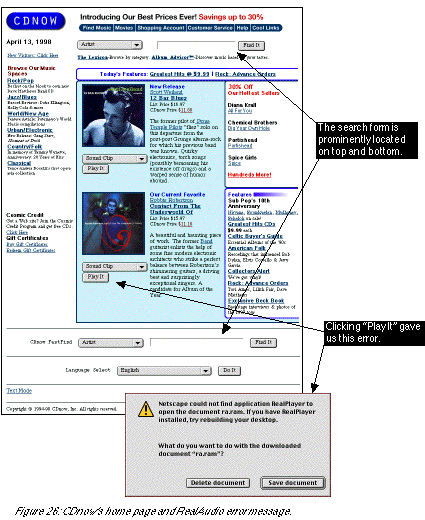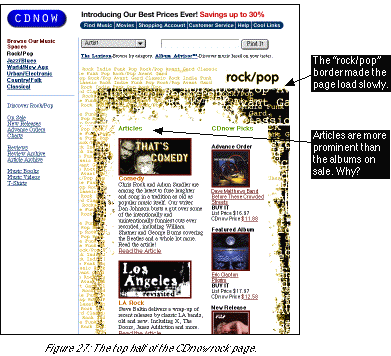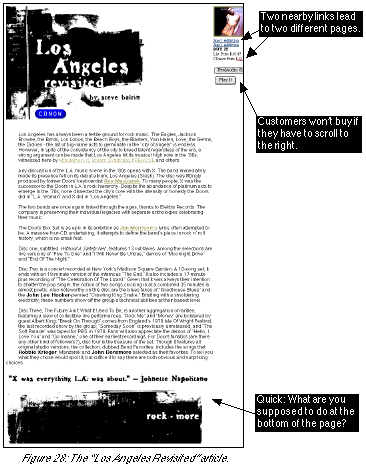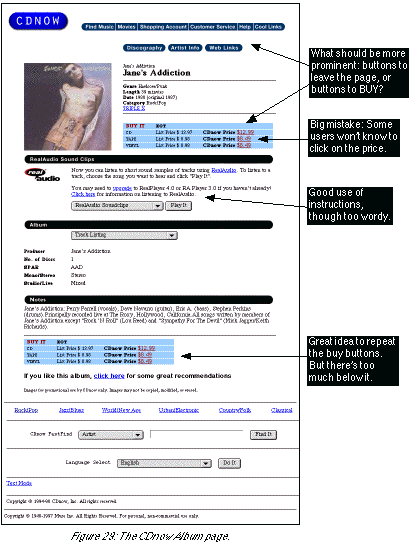What to Learn From CDnow
- It doesn’t matter how much money you spend on advertising and marketing. If your website doesn’t serve the customer, you lose.
- Don’t make your customers read error messages.
- Always include a clear, easy-to-find link at the bottom of the page. Make it easy for customers to accomplish their (and your) goals.
- On a lengthy page, be sure to allow customers to buy at the bottom of the page.
- Always, always, always make it easy for the customer to buy.
CDnow, Eight Months Later
The two changes on CDnow that the report suggested are both found on the album page (see below). Most importantly, it’s easier to buy the album, now that customers no longer have to click on the price: a prominent “Add to Cart” link is much more clear. Supporting links like “Biography” are now in text instead of graphics. We also notice that the track listing, previously contained in a drop-down menu, is now listed in two easy-to-read columns of text.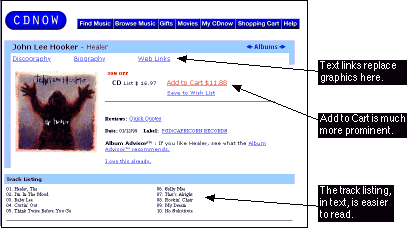
Next Section: Outtakes
| Table of Contents | About the Second Edition | Executive Summary | Introduction | Apple | Dell | Amazon | Barnes & Noble | America Online | Microsoft Expedia | CDnow | Outtakes | Creating the Good | Authors |

